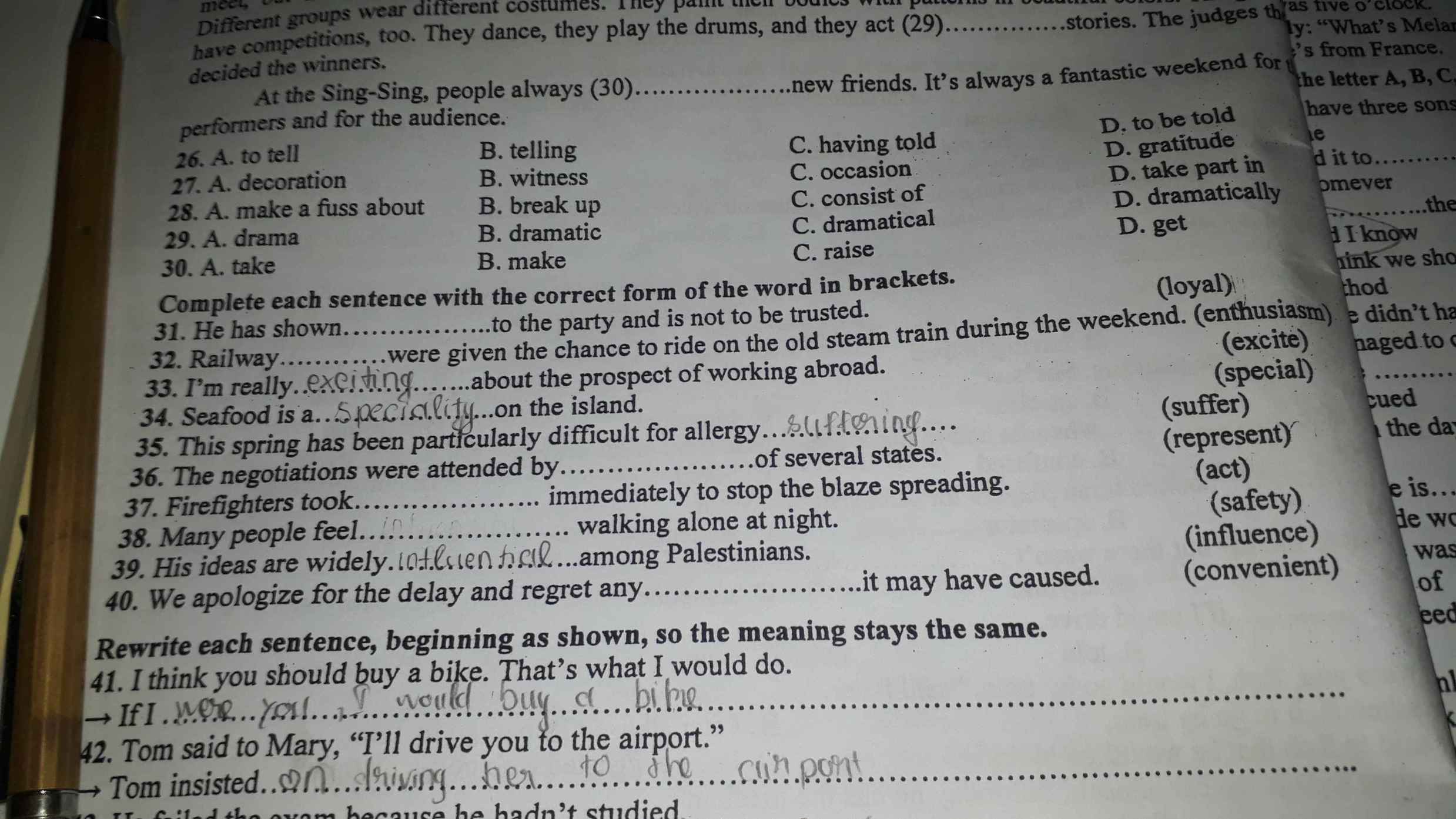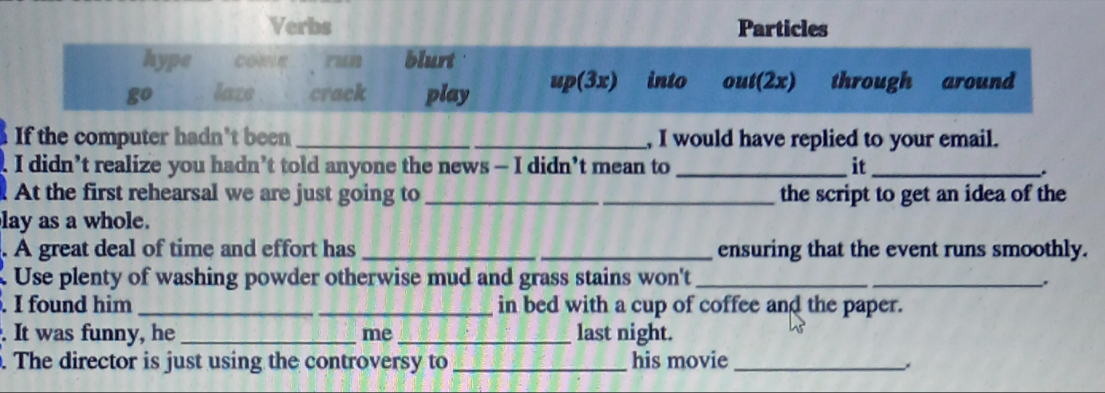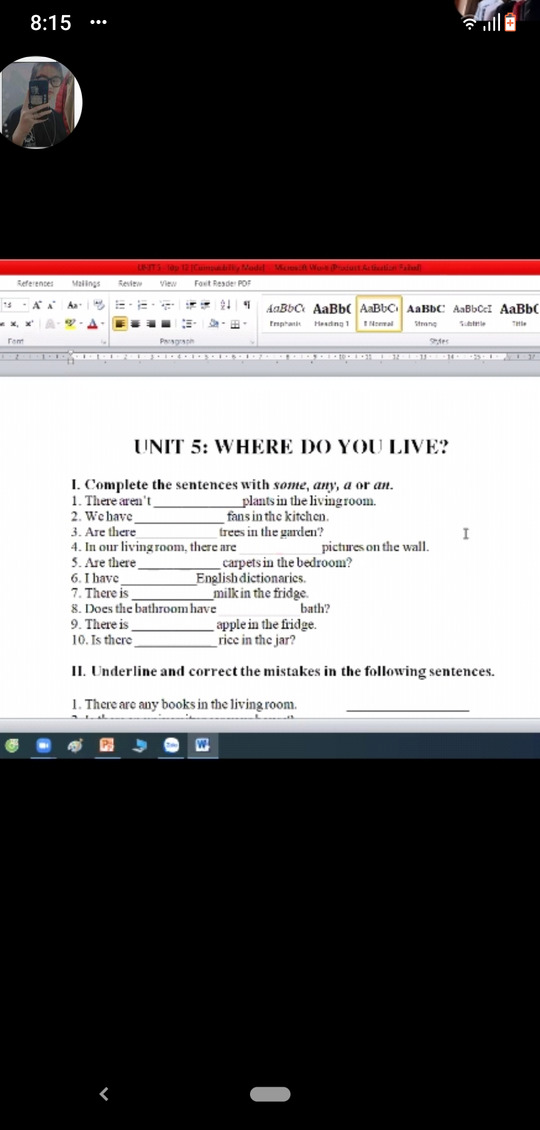Đề số 2
Các câu hỏi tương tự
THE SEARCH FOR ARTIFICIAL INTELLIGENCEIt is one of the most evocative phrases in the lexicon of science: artificial intelligence, ‘AI’, the creation of machines that can think. Just the mention of it conjures up images of HAL, the all-too intelligent computer in 2001: A Space Odyssey, and C3PO, the chatty, batty robot from Star Wars.For over half a century, computer scientists have been working towards creating such machines, spending billions of pounds in the attempt. And hanging over their eff...
Đọc tiếp
THE SEARCH FOR ARTIFICIAL INTELLIGENCE
It is one of the most evocative phrases in the lexicon of science: artificial intelligence, ‘AI’, the creation of machines that can think. Just the mention of it conjures up images of HAL, the all-too intelligent computer in 2001: A Space Odyssey, and C3PO, the chatty, batty robot from Star Wars.For over half a century, computer scientists have been working towards creating such machines, spending billions of pounds in the attempt. And hanging over their efforts has been a challenge set by a British mathematician widely regarded as the father of AI research: Alan Turing.During the 1930s, Turing showed, in theory at least, that a ‘universal machine’ could be built, capable of performing all the tasks of any special-purpose computing machine. After war-time work on code- breaking, Turing helped to turn his discovery into the reality of an electronic computer. But he also believed his proof meant that computers could mimic the action of the human mind. In 1951, Turing published a prediction: by the end of the century, computers would be able to hold a five-minute conversation with humans and fool 30 percent of them into believing they were dealing with another human being.It is a deadline that has come and gone, along with huge amounts of funding. Yet no computer is remotely close to passing the ‘Turing Test’. What went wrong? Why has no one succeeded in creating AI? In fact, AI is already here, earning its keep in banks, airports, hospitals, factories – even our own home and car. It may not be quite what many were led to expect, but then the story of real-life AI is one of misplaced dreams, bitter feuds and grant-grabbing hype.Today’s computer scientists divide into two broad camps on the issue of AI. The pragmatists see AI as a means to creating machines that do for thinking what engines have done for physical labour – taking on tasks we humans would prefer not to do: spending endless hours scouring heaps of market data for trends or scanning piles of medical images for signs of disease.Then there are the visionaries, still wedded to Turing’s challenge and trying to bring the sci-fi image to life. For them, AI is all about computerised ‘assistants’ that solve your printer problems and cheeky- chappy robots that talk to strangers. There are some who even see AI as the route to understanding the workings of the human mind.
Question 36. Which would best serve as the title for the passage?A. Turing test challenge B. What is Artificial Intelligence?C.The search for Artificial Intelligence D. Alan Turing: The father of AI research
Question 37. The phrase “conjures up” in paragraph 1 mostly means _________A. call B. brings to mind C. ignores D. stirs up
Question 38. According to paragraph 3, Turing believed that _________A. computers could copy human thought processB. computer research needed more fundingC. computers would eventually replace human beingsD. computers might be used for immoral purposes
Question 39. The word “them” in paragraph 3 refers to _______A. computers B. humans C. scientist D. machines
Question 40. The word “camps” in paragraph 5 is closest in meaning to _________A. tents B. bases C. barracks D. factions
Question 41. Which of the following is true, according to the passage?A. In the 1930s, Turing demonstrated that it was possible to create a 'universal machine'.B. Computer scientists have been working to construct Artificial Intelligence for over a century.C. Due to different views on AI, computer scientists are split into two groups.D. Turing claimed machines could speak to people and trick them into thinking they were communicating with another human being.
Question 42. Which of the following can be inferred from the passage?A. We already have been using Artificial Intelligence in our daily life.B. Human mind is more brilliant than Artificial Intelligence.C. Computer Scientists have failed in making a “universal machine”.D. Nobody can create a computer that can pass the “Turing Test”.
If you were planning to travel 38,000 km and visit 22 countries, what form of transport would you choose? A campervan, perhaps, taking all the comforts of home with you? Not Dutch actress Manon Ossevoort. Manon had dreamed of travelling from Europe across Africa to the South Pole for years, and she chose a slow form of transport that would symbolize the time needed to fulfill her dreams: a tractor. Manon only averaged 5 km/h as she drove, but that allowed her to get to know the hospitable people...
Đọc tiếp
If you were planning to travel 38,000 km and visit 22 countries, what form of transport would you choose? A campervan, perhaps, taking all the comforts of home with you? Not Dutch actress Manon Ossevoort. Manon had dreamed of travelling from Europe across Africa to the South Pole for years, and she chose a slow form of transport that would symbolize the time needed to fulfill her dreams: a tractor. Manon only averaged 5 km/h as she drove, but that allowed her to get to know the hospitable people that she met everywhere, and the tractor became the star attraction when Manon stopped over in villages for the night. She would explain why she was going to the South Pole and ask people in the villages andfollowing her blog to write down their own dreams. She promised that she would build a snowman when she arrived at her destination and leave all their dreams inside it. The idea was popular and Manon received thousands of dreams on pieces of paper and in emails.Finally, on 9 December 2014, Manon’s dream came true, and she pulled up in a big red tractor at the South Pole. She then built a snowman and left a time capsule inside it with all the dreams that she had collected on her journey. Maron explained on her blog that when the time capsule is opened in eighty years’ time, future generations will be able to read something about our lives and our hopes for the future.
(Adapted from Solutions Upper Intermediate 3 rd Edition by Tim Falla and Paul A Davies)
Question 31. What is the passage mainly about?A. An actress who dreamed of reaching the South Pole with a tractor.B. The journey of a woman traveling alone to the South Pole.C. The dreams of the people the woman met on her journey to the South Pole.D. A woman who fulfilled her dream to travel to the South Pole by a tractor.
Question 32. The word “their” in paragraph 2 refers to ________A. people that send her emails B. villagersC. people she met everywhere D. hospitable peopleQuestion 33. According to the passage, why did Manon choose to drive a tractor to destinations?A. To symbolize the time needed to make her dreams come true.B. To meet the people in the villages that she stopped for a night.C. To collect the dreams of people on pieces of paper to bring to the South Pole.D. To get to know the hospitable people she's met on her journey.Question 34. The phrase “pulled up” in paragraph 3 mostly means ______A. continued B. stayed C. arrived D. travelledQuestion 35. Which of the following is NOT mentioned in the passage?A. For years, Manon had dreamt of traveling from Europe across Africa to the South Pole.B. When she reached the South Pole, she created a snowman and left a time capsule inside it with all the dreams she gathered on her trip.C. Manon asked people to write down their dreams and send them to mail.D. As Manon stopped in villages for the night, the tractor became the star attraction.
Mọi người giúp với nha?
1.What are the advantages and disadvantages of living in a big city?
2. What are the advantages and disadvantages of using social networking?
3. Can you suggest some ways to preserve cultural identity?
Write the comparative or superlative form of the words in brackets
1 The weather is getting .(bad)
Never say anything negative about past experiences, employers, or courses or professors. Always think of something positive about an experience and talk about that. You should also be ____. If you are genuinely interested ____ the job, let the interviewer know that.One of the best ways to show you are keen on a job is to demonstrate that you have researched the organization prior to the interview. You can also ____ interest by asking questions about the job, the organization, and its service and...
Đọc tiếp
Never say anything negative about past experiences, employers, or courses or professors. Always think of something positive about an experience and talk about that. You should also be ____. If you are genuinely interested ____ the job, let the interviewer know that.
One of the best ways to show you are keen on a job is to demonstrate that you have researched the organization prior to the interview. You can also ____ interest by asking questions about the job, the organization, and its service and products. The best way to impress an employer is to ask questions that build your interview discussion. This shows you are interested and __ close attention to the interviewer. It is a good idea to prepare a few questions in advance, but an insightful comment based on your conversation can make an even stronger statement. At the ____ of the interview, it is appropriate for you to ask when you may expect to hear from the employer.
“Where are you going for holidays this year?” Kate asked me












